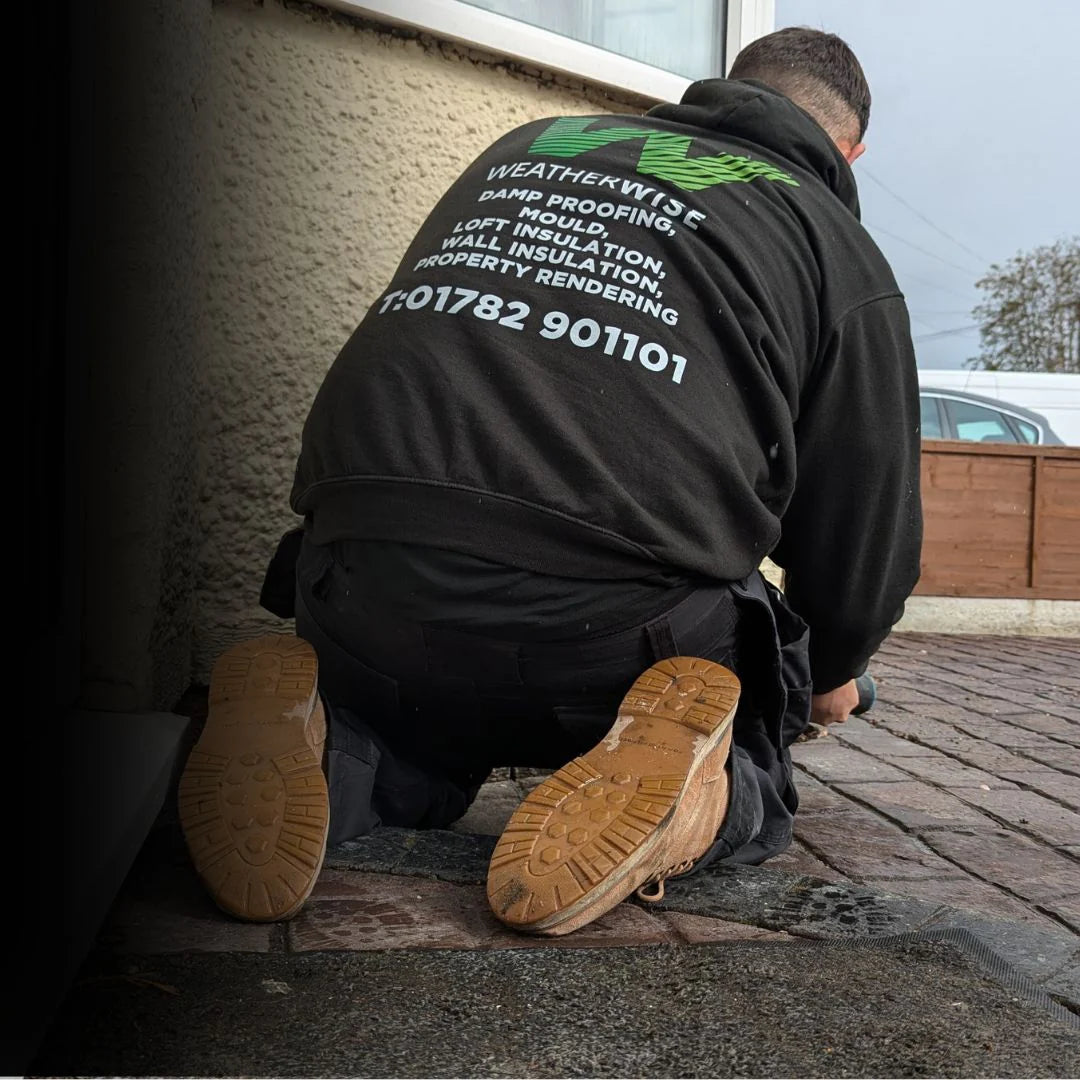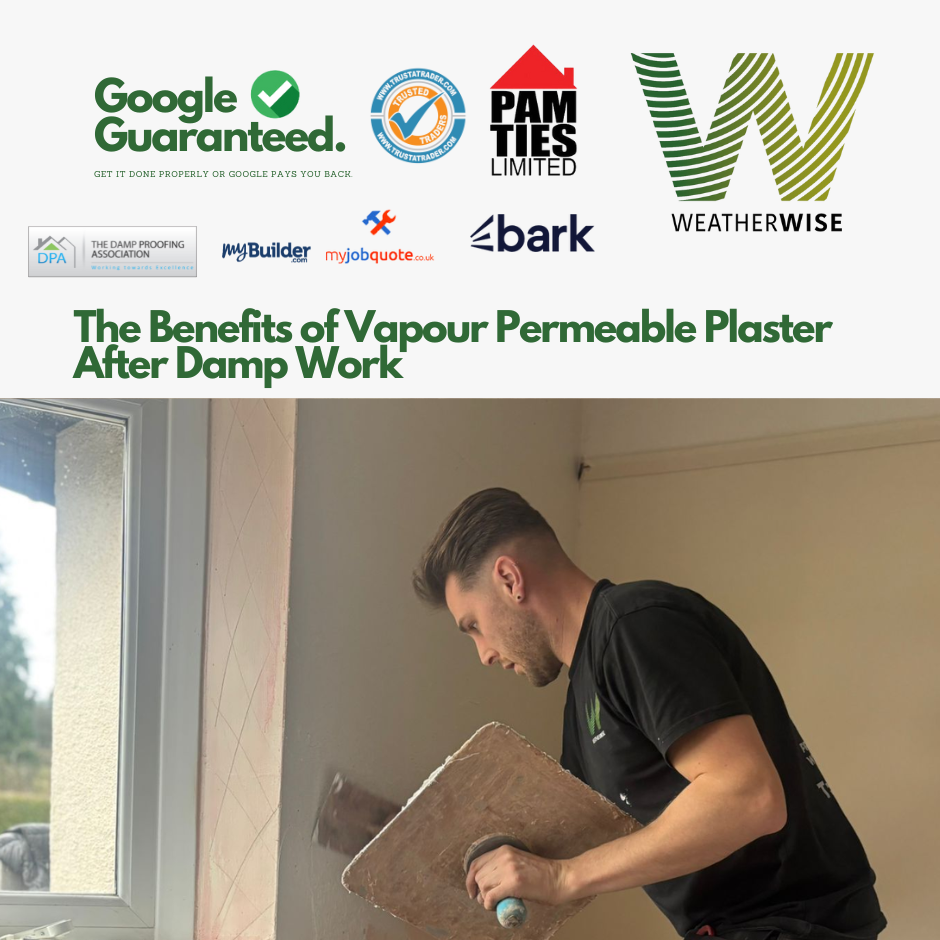🧱 Why Standard Plaster Often Fails on Damp-Treated Walls
After damp proofing, one of the most important (and often overlooked) steps is choosing the right plaster system. Traditional gypsum plaster is not suitable for damp-treated walls—it traps moisture, breaks down over time, and allows salts to resurface.
At Weather Wise Solutions, we use specialist vapour permeable plaster systems from PAM Ties, designed to allow residual moisture and humidity to evaporate naturally—without damaging the finish.
🚫 The Risks of Using Standard Plaster After Damp Treatment
✅ Traps Moisture – Gypsum or standard bonding plasters aren’t breathable. They lock in moisture, preventing proper wall drying.
✅ Salt Contamination – Rising damp often carries ground salts. Standard plaster will draw these to the surface, causing flaking, bubbling, and staining.
✅ Bridging the DPC – Incorrect plaster depth or coverage can bridge a new damp proof course, allowing moisture to bypass the barrier.
🌬️ Why Vapour Permeable Plaster Is the Right Choice
Specialist plasters are formulated to be vapour permeable—they allow walls to breathe and dry out naturally, without compromising the finish.
Benefits include:
✔️ Resistance to salt damage
✔️ Compatible with silicone-based DPC installations
✔️ Long-lasting, durable surface
✔️ Ideal for both modern and heritage properties
✔️ Helps avoid damp returning to internal finishes
We work with PAM Ties-approved systems and follow Damp Proofing Association best practice for all post-treatment finishes.
📐 Do I Always Need to Replaster After Damp Work?
Not necessarily. If there’s no salt contamination or bridging, we may advise against plastering. But when it’s needed, vapour permeable systems are the safest and most effective way to protect your walls long-term.
📞 Book Your Free Wall Survey Today
Need advice on replastering after damp treatment? Let us assess your wall and recommend the right finish.
Book a Free Survey for your Home here with Weather Wise Solutions – damp repair and plastering specialists.



